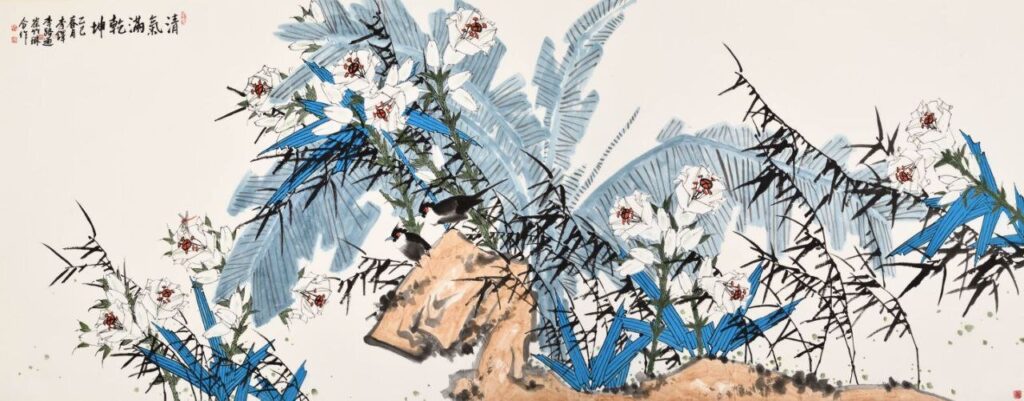BEIJING – On the sidelines of International Neighborhood Day held on the Diplomatic Residential Site in Beijing on May 10th, I was given the unusual opportunity to witness the fascinating world of traditional Chinese art dancing on paper.
Tradition fulfills innovation
Among the celebrities I met was Li Duo, the master of painting flowers and birds in freehand brushwork. Its art goes beyond mere techniques to become a meditation of natural elegance. Born in Beijing in 1952, a graduate of Beijing Normal University and student of Li Kuchan (1899-1983), a contemporary Chinese painting master, Li Duo’s work is a harmonious blend of classical sophistication and modern expressiveness.
Her paintings – the characteristics of platy trees, plum blossoms, lotus and delicate birds are more than depicted. They are lyrical whispers of Chinese artistic heritage. Taking inspiration from the legendary painter, she swings the brush with the bounty of a scholar to create a composition in which every stroke balances spontaneity and precision. The ink flows like a murmur of water, revealing ja-like clarity, but her subject appears to be breathing with zero gravity vitality.
What sets her apart is her ability to inject modern spirit into traditional literary paintings, creating works that resonate with both historical depth and emotional immediacy. As an honorary scholar at the Royal Academy of Arts and a respected figure in China’s Ministry of Culture, Li Duo’s paintings are a testament to the enduring power of Chinese ink art.
Chinese art speaks of civilization
Equally fascinating was his encounter with Li Lutong, an artist who serves as Chinese cultural ambassador. A master of painting, calligraphy and sculpture, his creations adorn the collections of global leaders.
Li’s art is a dialogue between the past and present. His brushwork reflects the grandeur of the Han-Tang dynasty, the meticulousness of Ming-Qing architecture, and the audacity of modern abstraction. His mastery of metal and stone carving techniques gives his work a sturdy and refined texture, but his calligraphy strokes seem to dance on paper, embodying both the vastness and intricate details of the universe.
In a world dominated by digital art, Li Lutong’s dedication to traditional mediums reminds us of China’s unbroken artistic lineage.
Eternal Thread: The Art of the Chinese Knot
Without the intricate beauty of Chinese knots, the quest for Chinese artistry is not perfect. MegCui brought this ancient craft back to life right in front of me. Recognised as a national intangible cultural heritage in 2008, these woven silk masterpieces date back to the Shang-Zhou era, and evolved from practical fasteners to symbols of unity and good fortune.
CUI showed how a single, unbroken thread transforms into a “eternal knot” for love, a “knot of good fortune” for prosperity, a symmetrical loop that embodies harmony and continuity. The accuracy of the craft is incredible, with threads intertwined without a single failure, which requires perfect control.
From decorating traditional clothing to decorating the 2022 Beijing Winter Olympics, the Chinese knot is more than decoration. They are a quiet language of cultural pride, weaving the past and present of China.
Celebration of the cultural soul
My journey through the artistic landscapes of China made me awe-inspiring. Whether it’s Li Duo’s poetic brushwork, Li Lutong’s mastery, or Meg Cui’s complicated knot, one truth has been revealed. Chinese art is not merely about aesthetics.
In a rapidly modernising world, these artists exist as guardians of tradition, ensuring that the vitality of ancient sages and modern China remains intertwined forever. For those trying to understand the Chinese soul, look for more than that art. Every stroke, every knot tells the story.

